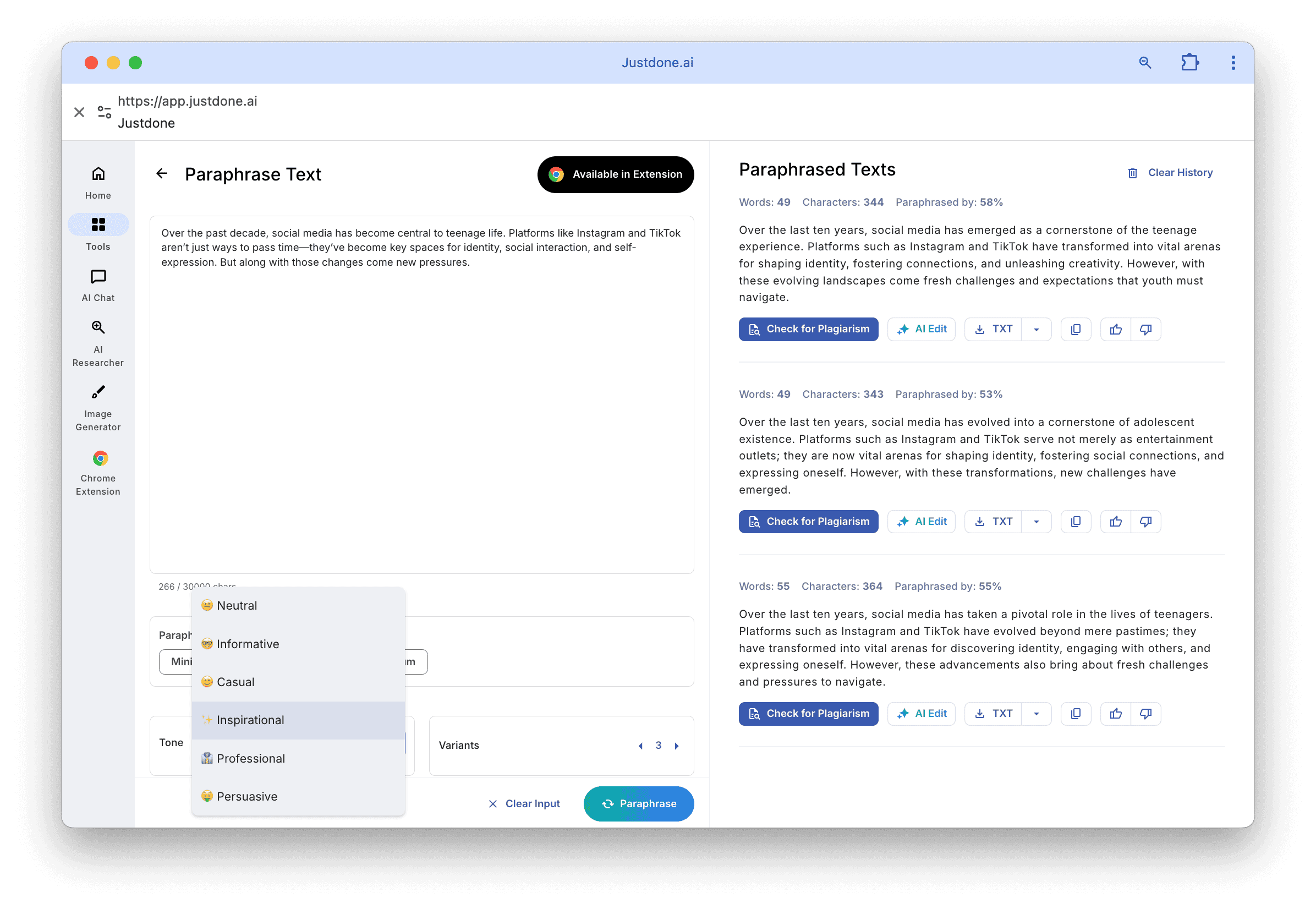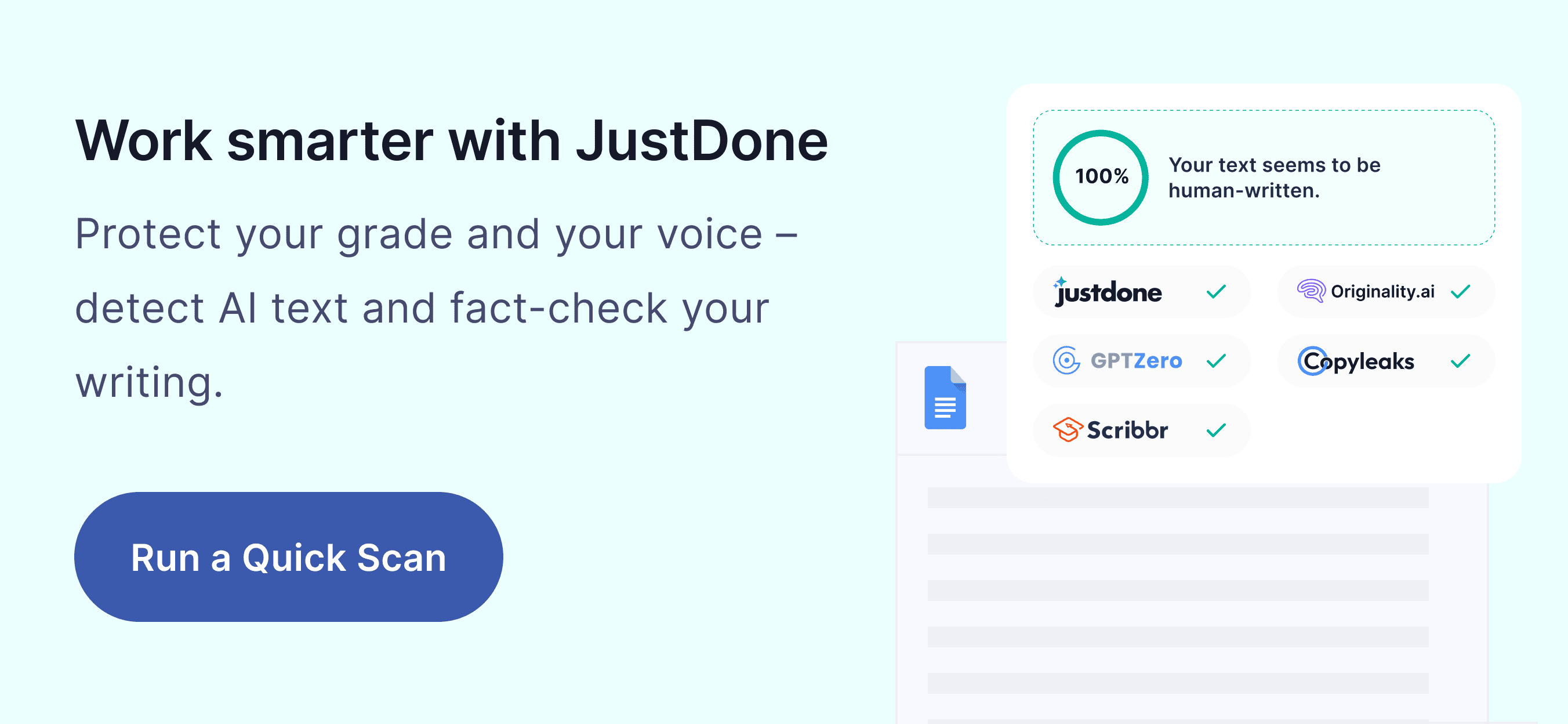Paraphrasing is a vital tool for anyone dealing with information—students, educators, content creators, or professionals. No matter what you need - to paraphrase a paragraph for an academic project, simplify ideas in an article, or clarify a technical document - understanding how to paraphrase properly helps you steer clear of plagiarism and deliver clearer communication.
This guide walks you through essential concepts like ethical paraphrasing vs. plagiarism, paraphrasing rules, and when to paraphrase versus quote. You'll also discover a 5-step method to paraphrase any content while avoiding plagiarism. Plus, explore AI paraphrasing tools that speed up your writing process.
What Is Paraphrasing?
To paraphrase means to restate someone else’s ideas using your own language while keeping the original meaning intact. Unlike quoting, where you copy exact words with citation, paraphrasing reflects your grasp of the concept and your ability to express it differently.
Here's why mastering paraphrasing techniques is important:
- Clarity: It breaks down complicated concepts.
- Originality: You create something new from existing information.
- Integrity: It supports ethical writing by avoiding plagiarism.
Paraphrasing examples:
- Original: “The quick brown fox jumps over the lazy dog.”
- Paraphrased: “A swift brown fox leaps over a resting dog.”
Paraphrasing shows up everywhere, not just in schoolwork. In business writing and digital content creation, I’ve seen how rewording ideas can make writing more engaging and tailored to the audience.
5 Steps for How to Paraphrase Successfully
Here’s a straightforward method for paraphrasing a sentence, a paragraph, or even an entire section of text:
- Read Thoroughly: Understand what the original text is saying.
- Note Key Points: Summarize the core ideas without mimicking the language.
- Rewrite from Memory: Using your own words and sentence structure, recreate the meaning.
- Compare Versions: Ensure your rewrite keeps the original intent without duplicating phrasing.
- Credit the Source: Even if you’re not quoting directly, always acknowledge where the ideas come from.
Pro Tip: If you hit a block, AI paraphrasing tool can give you alternative phrasings. I regularly use JustDone AI for rewriting technical materials because it makes complex information easier to explain without losing meaning.
Paraphrasing Rules: What to Follow
Paraphrasing well involves more than just changing a few words. These core rules will help you stay on track:
- Don’t mimic phrasing: Fully rework the sentence style and word choice.
- Stick to the meaning: Ensure you capture what the original author meant.
- Use your tone: Adapt the language to your audience and writing context.
- Always cite: Even paraphrased content needs attribution.
Paraphrasing examples:
- Original: “Global warming is caused by increased greenhouse gases in the atmosphere.”
- Paraphrased: “An uptick in greenhouse gas levels contributes to climate change.”
Personal note: Early in my career, I paraphrased too closely and got flagged for accidental plagiarism. It was a learning experience that taught me to double-check my phrasing. Now, I always double-check my work using AI tools to make sure my rewrites are truly original.
Ethical Paraphrasing vs. Plagiarism
It’s easy to blur the line between ethical paraphrasing and plagiarism if you’re not careful. However, it's quite easy to distinguish the two. When ethical paraphrasing, use your own language, restructure ideas, and credit the original source. When plagiarism occurs, it means you borrow too closely from the source’s words or structure without acknowledgment.
| Aspect | Ethical Paraphrasing | Plagiarism |
|---|---|---|
| Words | Fulle rewritten in a new style | Too similar to original wording |
| Structure | New sentence organization | Mirrors original layout |
| Attribution | Clearly cited | Citation often missing |
| Purpose | To explain or clarify | To pass off as original |
Even when your intentions are good, unintentional plagiarism can happen. Don't forget to verify your rewrites for originality before publishing.
Paraphrase in a Sentence vs. Paraphrasing a Paragraph
Paraphrasing can happen on different levels. Sometimes you only need to rewrite a single sentence. In these cases, the goal is usually to make the idea clearer or less repetitive, which is helpful for avoiding repetitive language or clarifying a point. At other times, you may need to paraphrase an entire paragraph. That requires identifying the key points and reorganizing them with new phrasing while preserving the original intent. Both approaches demand careful attention, but the paragraph-level work often takes more thought and restructuring.
Sentence Level Example
| Original | Paraphrased Sentence |
|---|---|
| "Many species are endangered due to habitat loss." | "The destruction of habitats is putting countless species at risk." |
Example of Paragraph-Level Paraphrasing
| Original | Paraphrased Paragraph |
|---|---|
| "Many endangered species face extinction because their habitats are being destroyed by human activities such as deforestation and urbanization. Conserving their environments is crucial to their survival." | "Human actions like clearing forests and building cities are wiping out habitats, endangering many species. Protecting these natural spaces is vital to keeping biodiversity alive." |
Paraphrase Versus Quote
Deciding whether to paraphrase or use a direct quote depends on what you’re trying to achieve.
Paraphrasing is ideal when you want to simplify complex language, match the tone of your writing, or condense a long passage.
Use paraphrasing when:
- The original text is overly complex.
- You want the tone to match the rest of your writing.
- You're summarizing larger sections.
Quoting, on the other hand, is better when the original phrasing is especially powerful or when you're relying on a highly authoritative source.
Use quotes when:
- The wording is particularly striking or important.
- The source is highly credible and authoritative.
- The exact phrasing is essential to your point.
From experience, paraphrasing helps maintain a smooth flow and a unified voice, especially in long-form content. Still, I quote when the author’s words have a unique impact.
Common Paraphrasing Mistakes to Avoid
Even experienced writers makes mistakes when paraphrasing. The most frequent errors include:
- Staying too close to the original: Avoid swapping a few words and calling it a paraphrase. Restructure the idea from scratch.
- Distorting the meaning: Always ensure you’re reflecting what the author intended.
- Skipping citation: Even paraphrased content needs a source mentioned.
Pro Tip: A fresh perspective often reveals what needs to be fixed. Take a short break after paraphrasing and return with fresh eyes. I’ve caught many errors this way. Take some time to come back to your text to make checking more efficient.
AI Tools for Better Paraphrasing
Modern writing doesn’t need to rely on manual effort alone. While paraphrasing has long been a manual skill, today’s writers can take advantage of advanced AI tools to speed up the writing process and improve accuracy. JustDone, for example, offers a suite of over 25 AI tools that assist with rewriting, summarizing, checking originality, and more.
These tools allow you to rewrite content quickly while maintaining a consistent tone, whether you're working in a document or directly on a website. What I appreciate most is that JustDone also includes a built-in originality checker, which adds an extra layer of confidence before publishing.
The main reasons I use AI for paraphrasing are its ability to save time, stay consistent, integrate smoothly, and help avoid plagiarism. It allows me to rewrite content quickly without sacrificing quality, maintain a consistent tone across sections, work seamlessly across platforms like websites and documents, and verify originality with its built-in checker.
Master the Skill of Paraphrasing
Paraphrasing is more than a shortcut—it’s a cornerstone of ethical, thoughtful communication. If you follow the five steps for how to paraphrase, stick to proven paraphrasing rules, and know when to paraphrase versus quote, you’ll strengthen your writing skills. JustDone AI can enhance the process, but it’s your understanding that makes paraphrasing truly effective. With regular practice, you’ll write with more confidence and clarity across all kinds of content.
